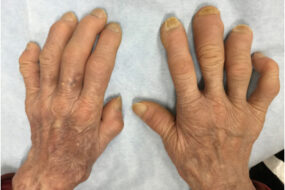- Home
- INTERNAL MEDICINE
- Hypertensive Emergencies

A hypertensive emergency is characterized by a severe elevation in blood pressure (BP), usually >180/120 mmHg, accompanied by acute end-organ damage. This damage may affect the brain, heart, kidneys, or eyes, and requires immediate BP reduction to prevent morbidity and mortality.
Pathophysiology:
Hypertensive emergencies occur due to the failure of autoregulation in the vascular system, leading to abrupt elevations in BP. This results in endothelial injury, increased vascular permeability, and subsequent end-organ ischemia or damage.
Common Causes:
- Primary Hypertension: Uncontrolled or poorly managed chronic hypertension.
- Secondary Hypertension: Caused by conditions such as pheochromocytoma, renal artery stenosis, eclampsia, or hyperaldosteronism.
- Drug-Related Causes: Cocaine, amphetamines, or withdrawal from antihypertensive medications.
- Other Causes: Acute glomerulonephritis, autonomic dysreflexia (in spinal cord injury), or head trauma.
Clinical Presentation:
- Neurological Symptoms: Severe headache, confusion, altered consciousness, seizures, or visual disturbances (signs of hypertensive encephalopathy, stroke, or intracerebral hemorrhage).
- Cardiac Symptoms: Chest pain, dyspnea, or palpitations (associated with myocardial infarction, heart failure, or aortic dissection).
- Renal Symptoms: Oliguria or hematuria (signs of acute kidney injury).
- Ophthalmic Symptoms: Blurred vision or retinal hemorrhage (indicative of hypertensive retinopathy).
Diagnostic Approach:
Blood Pressure Measurement: Confirm severe BP elevation in multiple readings in different settings.
Laboratory Investigations:
- Electrolytes, Urea, Creatinine: To assess renal function.
- Complete Blood Count (CBC): To check for hemolysis or thrombocytopenia.
- Cardiac Enzymes (e.g., Troponin): If myocardial infarction is suspected.
- Urinalysis: To detect proteinuria or hematuria.
Imaging:
- Chest X-ray: For signs of heart failure or aortic dissection.
- Head CT/MRI: If neurological symptoms suggest stroke or hemorrhage.
- ECG: To detect ischemic changes or left ventricular hypertrophy.
- Echocardiography: For assessing left ventricular function or aortic root dilation.
Ophthalmologic Examination: To check for hypertensive retinopathy.
Management:
1. Goals of Treatment:
- Initial BP Reduction: Reduce mean arterial pressure (MAP) by 20-25% within the first hour, except in certain conditions (e.g., aortic dissection, eclampsia, or pheochromocytoma), where more rapid reduction is necessary.
- Subsequent Reduction: Target BP of 160/100-110 mmHg over the next 2-6 hours, then gradual reduction to normal over the next 24-48 hours.
- Exceptions: In ischemic stroke, do not lower BP unless it is >185/110 mmHg for thrombolysis candidates or >220/120 mmHg in non-thrombolysis cases.
2. Intravenous (IV) Antihypertensive Agents:
The choice of medication depends on the specific end-organ damage present.
Neurological Emergencies (e.g., Hypertensive Encephalopathy, Stroke)
- Labetalol: 20 mg IV bolus over 2 minutes, followed by 40-80 mg every 10 minutes (max 300 mg), or a continuous infusion at 1-2 mg/min.
- Nicardipine: Start at 5 mg/hour IV infusion, titrate up by 2.5 mg/hour every 5-15 minutes (max 15 mg/hour).
- Clevidipine: Start at 1-2 mg/hour, double every 90 seconds to a maximum of 32 mg/hour.
Cardiac Emergencies (e.g., Acute Coronary Syndrome, Heart Failure):
- Nitroglycerin: 5-10 mcg/min IV infusion, titrate to achieve desired effect (mainly for acute coronary syndrome).
- Sodium Nitroprusside: 0.25-0.5 mcg/kg/min, titrated up to a maximum of 10 mcg/kg/min (used cautiously due to risk of cyanide toxicity).
- Esmolol: Initial bolus of 500 mcg/kg over 1 minute, followed by 50-200 mcg/kg/min infusion.
Aortic Dissection:
- Esmolol: As above, to rapidly reduce heart rate (<60 bpm) and BP.
- Labetalol: 20 mg IV bolus, followed by continuous infusion if required.
- Add Vasodilator (e.g., Sodium Nitroprusside) if additional BP reduction is needed.
Renal Emergencies (e.g., Acute Kidney Injury):
- Fenoldopam: 0.1-0.3 mcg/kg/min IV infusion, titrate every 15 minutes.
- Nicardipine: 5 mg/hour, titrate up as needed. e. Eclampsia/Pre-eclampsia:
- Labetalol: 20 mg IV bolus, titrate every 10 minutes.
- Hydralazine: 5-10 mg IV bolus, repeated every 20-30 minutes.
- Magnesium Sulfate: For seizure prophylaxis (4-6 g IV loading dose, followed by 1-2 g/hour).
3. Non-Pharmacological Interventions:
- Supportive Care: Monitor vital signs, cardiac function, urine output, and neurologic status.
- Oxygen Therapy: For patients with respiratory distress or heart failure.
Complications of Hypertensive Emergencies:
- Neurological: Stroke, intracerebral hemorrhage, hypertensive encephalopathy.
- Cardiac: Myocardial infarction, heart failure, aortic dissection.
- Renal: Acute kidney injury, nephrosclerosis.
- Ophthalmic: Retinal detachment, vision loss.
Special Considerations:
- Pregnancy-Related Hypertension: Special management protocols are required for pre-eclampsia and eclampsia, with drugs like labetalol, nifedipine, and hydralazine preferred.
- Pheochromocytoma Crisis: Use alpha-blockers (e.g., phentolamine) before beta-blockers to avoid unopposed alpha stimulation.












